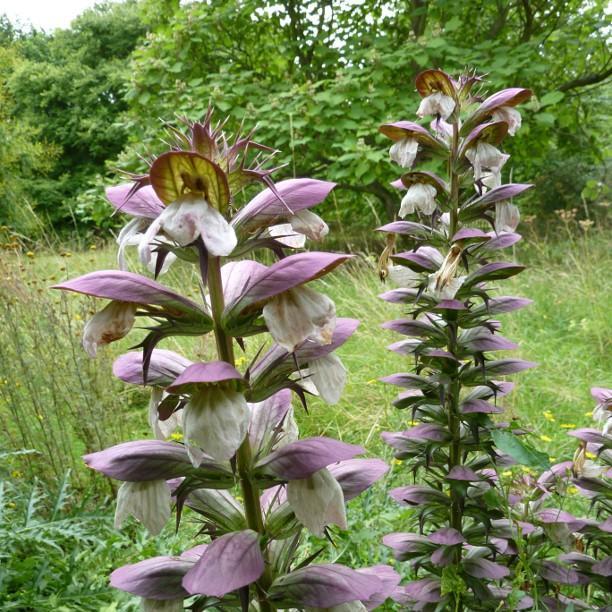
Acanthus mollis
Bear's Breeches
Acanthus is an attractive, architectural, clump-forming plant, with dark green lobed leaves. In late Summer, tall racemes of white two-lipped flowers with purplish bracts appear. This plant can be quite invasive, and, once established, quite difficult to get rid of.
-
Full sun to deep shade
-
Occasional watering
-
Full Frost Hardy: 5F (-15°C)
-
Free draining and fertile
Common name
Bear's Breeches
Latin name
Acanthus mollis
type
Herbaceous Perennial
family
Acanthaceae
ph
5.0 - 8.5 Acid - Neutral
Plant & bloom calendar
-
Best time to plant
-
When the plant will bloom
full grown dimensions
 1.20 M
1.20 M
1.20 M
1.20 M
Acanthus mollis
Acanthus is an attractive, architectural, clump-forming plant, with dark green lobed leaves. In late Summer, tall racemes of white two-lipped flowers with purplish bracts appear. This plant can be quite invasive, and, once established, quite difficult to get rid of.
Flowering Season
From Late Spring TO Late Summer
Purple/white flowers from late spring to late summer.
Planting Season
From Early Spring TO Mid Spring
Planting container grown plants in moderately fertile, well-drained soil in early spring. Also root cuttings can be taken and planted from mid to late winter. Can be planted in full shade to full sun.
Propagation by seed
From Early Spring TO Mid Spring
Sow seed under glass in spring.
Propagation by root cuttings
From Late Autumn TO Mid Winter
Carefully lift the plant out of the ground, do not to damage its roots. Rinse the roots in water to remove all soil. With a sharp knife, take off 5cm lengths of pencil thin roots. Fill pots with compost to which grit has been added, lay the cuttings, spaced out, on top. Cover with a thin layer of compost. Water well, label pots and place in a in a cold frame or somewhere cool indoors. Replant the parent plant.
Propagation by division.
From Early Autumn TO Mid Autumn
Using a fork dig up plant, trying to keep the root ball as complete as possible. Split the root ball at the centre with a sharp knife or a spade, or by placing two garden forks back-to-back into the middle of the root ball, and pushing the fork handles apart.to lever the root ball apart. Replant the new clumps to the same depth as the original, and water well. Keep well watered until established.



























